Fly Fishing Bass: 5 Tips for Fishing Frog Patterns Around Grass

Some of my most memorable days chasing bass on the fly have come from me spending the day popping and waking frog patterns along the surface.
I grew up fishing for bass, and although trout fishing has stolen the majority of my fly fishing attention over the years, I’ve always held a special place in my heart for catching bass on the fly. I’ve got friends that don’t see the coolness in fly fishing for bass, but that’s because most of them haven’t put in enough time on the water to experience perfect fishing conditions, and witness the thrill of bass smashing their fly, cast after cast. Bass are amazingly acrobatic fish, and they provide more than enough pull and rod bend to justify fly fishing for them. If you haven’t explored this area of fly fishing, I highly recommend it.
The other day, Louis and I left our houses at 2:45 in the morning to drive across the Georgia State line, and fly fish for bass on Lake Guntersville. Louis was doing a shoot for a new bass lure company, and I was lucky enough to get invited to tag along. Normally, it would be a real challenge to drag me out of bed at this hour, but Lake Guntersville is considered one of the top bass fishing lakes in the entire country. More importantly, the lake is famous for its unbelievable frog fishing that generally starts in June, and runs through the summer months. Lake Guntersville hosts several professional bass tournaments throughout the year, and in 2014, it will host the most famous of all tournaments, The Bassmaster Classic.
During the tournaments on Lake Guntersville, it’s not uncommon for bass anglers to weigh-in five fish sacs, well over 35 pounds. That’s right, we’re talking about an average fish weight of over seven pounds. If that doesn’t get you excited about visiting Lake Guntersville, I suggest you get someone to check your pulse. The reason this lake can grow and sustain such large numbers of trophy bass, comes from the high fertility of its waters, and that’s provided by it being located in an interconnected series of flowing lakes. This feature provides a constant fresh supply of inflowing water and food throughout the entire lake chain, and Lake Guntersville happens to lie smack dab in the middle.
In June, Lake Guntersville is completely transformed, as large areas of the lake are taken over by aquatic vegetation (hydrilla and milfoil) growing to the surface. So much in fact, that it’s not uncommon to find your self fishing the lake where there’s more grass than open water. Bass fisherman come from all over the country to cast their frog and rat patterns around the grass mats to coax bass into crushing them. This was exactly my plan with Louis for our day on Lake Guntersville. Unfortunately, the unusually cold nights of April and May had the grass behind schedule. We were still able to find grass and catch some good bass on our frog patterns, but the frog bite was nothing like it’s going to be in a month from now. For those of you interested in getting in on this amazing grass bite on Guntersville or any other reservoir that has good grass concentrations during the summer, I’ve provided five tips below that should help you increase your success.
Read More »Use Old Plano Boxes For Bulk Fly Storage

Of all the thousands of dollars of bass fishing gear that I’ve accumulated over the years there’s very little of it that I can find a use for in my fly fishing today.
Well, I could probably find a way to use some of it, but I’d definitely get bashed for it by my friends. My Plano tackle boxes, however, have proven to be very useful for me in my drift boat and when I’m traveling across the states on my fly fishing trips. I can load up one Plano box for my drift boat and I’m good for the day, and if I’m traveling out west, I often use one to throw all my big dry fly patterns or streamers in, so I don’t have to keep up with several smaller fly boxes during the trip. Every morning I’ll take out what I need and stow them in one or two fly boxes that I can carry easily with me on the water.
Read More »Fly Fishing Runoff Can Mean Fish On

by Johnny Spillane
HAVE YOU EVER SHOWED UP AT A RIVER AND FOUND THAT INSTEAD OF THE CRYSTAL CLEAR WATER YOU WERE EXPECTING, YOU’RE STARING AT CHOCOLATE MILK?
Here in the Rocky Mountain this is a relatively common experience. It can happen for a number of reasons, huge rainstorms, someone doing river work above you or just your normal spring runoff. Don’t fret; while it might not be ideal, here are a few tips that can help you find some fish.
If the water is only slightly off color, you can basically use the same flies that you would if it was clear, just make everything a size or two larger. Instead of a size 18, put on a 16 or a 14. If that is not working, try adding a little bit more flash to your rig. We typically use flies with very little flash, but if the water is off color it can make a big difference in the amount of fish you stick just by changing to something that will reflect a little more light. If you were using a pheasant tail, try tying on a flash back pheasant tail and sometimes that is the only thing you will need to change.
If the water looks like chocolate milk, go big and go flashy. Those size 22 zebra midges that you planned on tying to 6x, that aint gonna work. I like to tie on a large white zonker and dead drift it with some sort of big buggy stonefly like a Pats Rubber leg. In off color water, fish will lose some of their inhibitions and hit anything that they can see. You just have to make sure that they see it. This is also a great time to experiment with different streamers that make noise, anything that will help draw a fish towards you fly.
Fishing runoff can also be one of the best times to hit a river. If it is fully blown, it might be better to explore other options but if a river is on the downside of its peak flows and it is starting to clear up, fishing can be phenomenal. Fish that are spread out all over the river during normal flows will congregate in areas of softer water during runoff and usually if you find one fish, you find 20. When the river is really high
Read More »8 Common Mistakes Anglers Make Fighting Trout
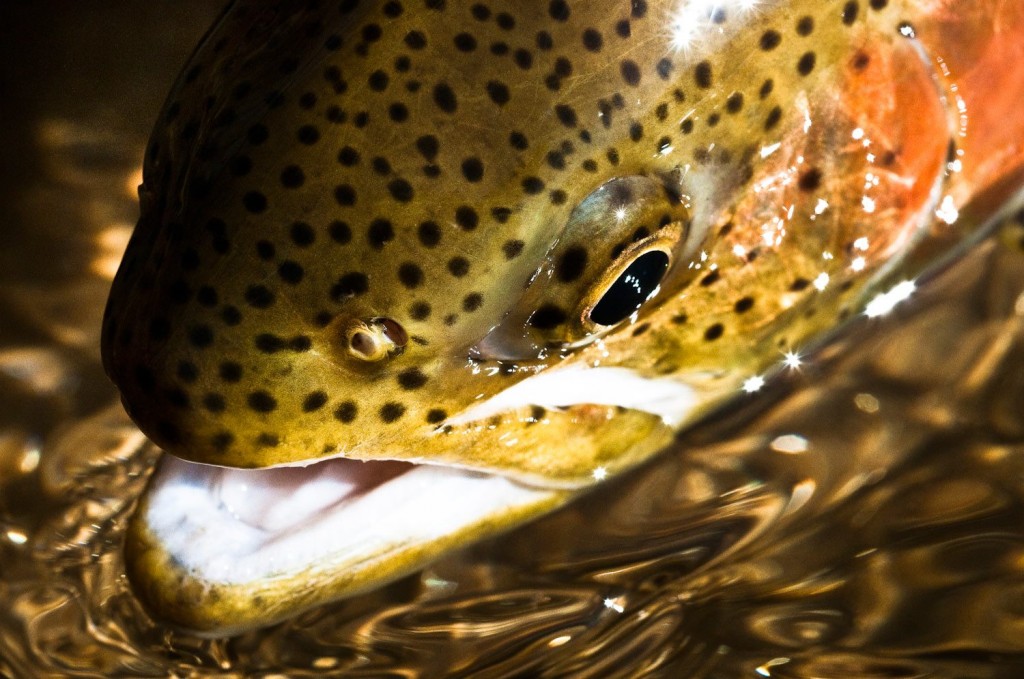
If I looked backed on my early fly fishing days and had to grade my fish fighting skills, it would yield a discouraging report card.
I lost way more fish than I actually landed during those first few years after picking up a fly rod. I’ll never forget how tense and anxious I was every time I’d find myself hooked up with a nice trout. It seemed like every second of the battle I was terrified that I was going to lose my trophy. In turn, I constantly second guessed my fighting instincts, I wouldn’t follow after my fish if it swam upstream or downstream of me, and I knew very little about the correlation between rod position and applying fighting pressure. Furthermore, I was really clumsy when it came to clearing my excess fly line and reeling in the fish. I always had a hard time figuring out when it was a good time to do that. When all said and done, I bet I only landed one or two fish out of every five fish I hooked during my rookie days. That’s not so hot, probably a D average if I was grading myself extremely leniently. We’ve all been there at some point during our fly fishing career, some of us may even find ourselves with that D average right now. Here’s the positive outlook though, most trout that are hooked and lost during the fight can be linked back to a handful of common mistakes. Yet, most of the time, they all can be easily avoided if you pay close attention to what you’re doing when you’re fighting a trout.
Mistake #1 – Not being in the hook set ready position
I know it sounds elementary, but during my early days, I would often find myself fumbling around with my fly line during my drifts. I didn’t always have my fly line secure in my rod hand, and that usually put me with too much slack in my fly line to pull off a solid hook set. I see anglers all the time during their drifts holding their fly line in their stripping hand only. Bites often come when we least expect them. To increase your chances of getting a good hook set and landing the trout, always make sure you’re in the hook set ready position. Get in the habit of putting the fly line in your index and middle finger on your rod hand immediately after you present your fly. This will have you ready to set the hook the instant you get a bite, and you’ll find your line management will improve.
Mistake #2 – Anglers fail to keep tension after the hook set
Not all the time, but more times than not, trout will swim towards you after being hooked, and it’s critical that you keep your rod tip up and immediately begin stripping in your fly line after the hook set. Doing so, you’ll have a good chance at eliminating the slack and maintaining tension on the fish. Instead of stripping, some fly anglers feel compelled to swing their body around and begin moving away from the fish after setting the hook. This puts the angler out of position, shuffling their feet awkwardly and also doesn’t allow them
Bonefish Flats Revealed
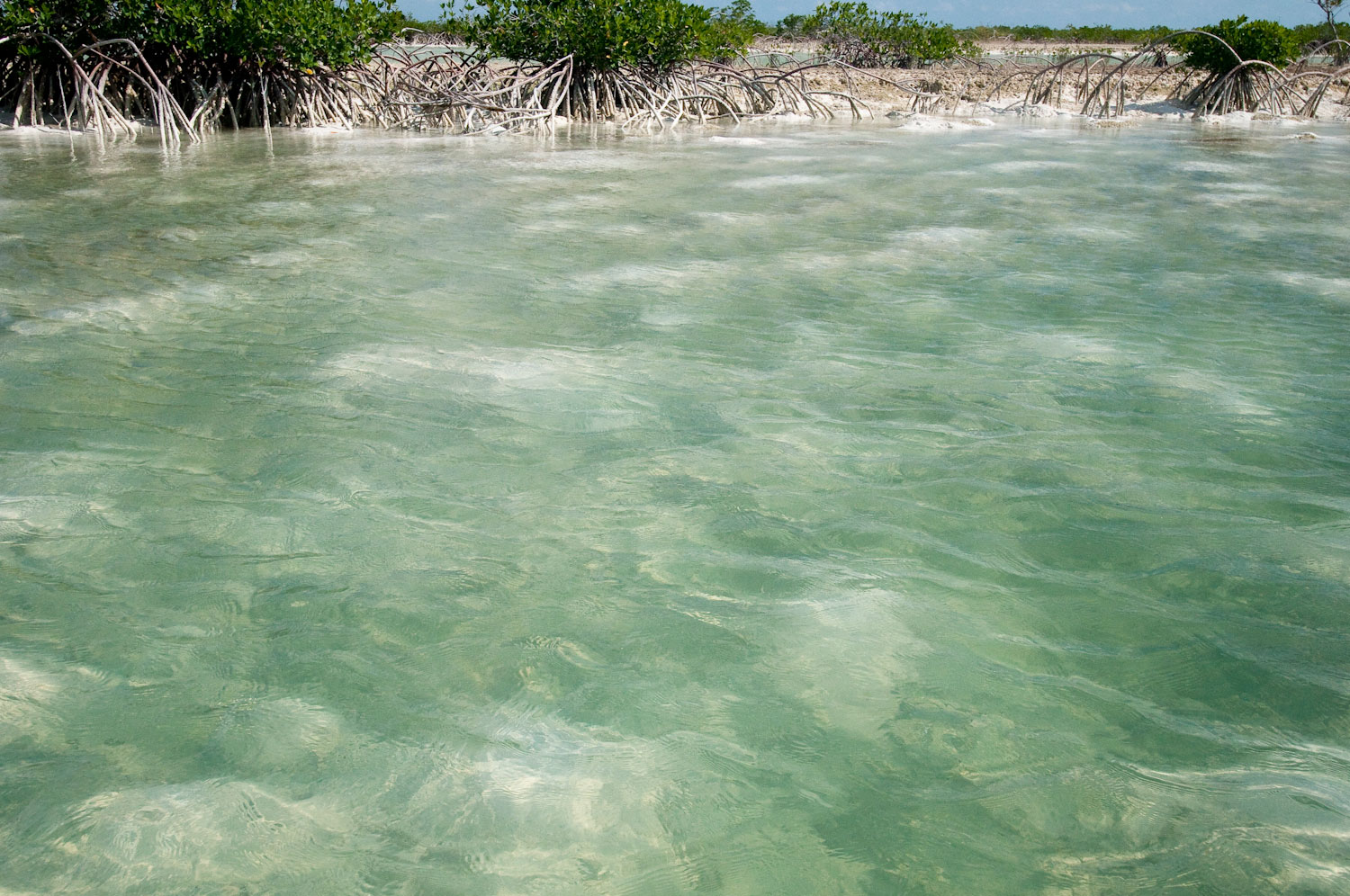
IT’S IMPORTANT TO KNOW YOUR OPPONENT, AND TO THAT END IT’S GOOD TO KNOW HIS NEIGHBORHOOD.
When we look at a bonefish flat we tend to perceive it as two- dimensional. It’s right there in the name, flat. The truth is, it’s far from flat. The bonefish’s world is as three-dimensional as ours. It’s a landscape full of hills and valleys, mounds and burrows. The crabs, shrimp and such that bonefish feed on use these features to hide or escape from the hungry predator. Knowing this can give us an advantage.
Alice’s Angle: December
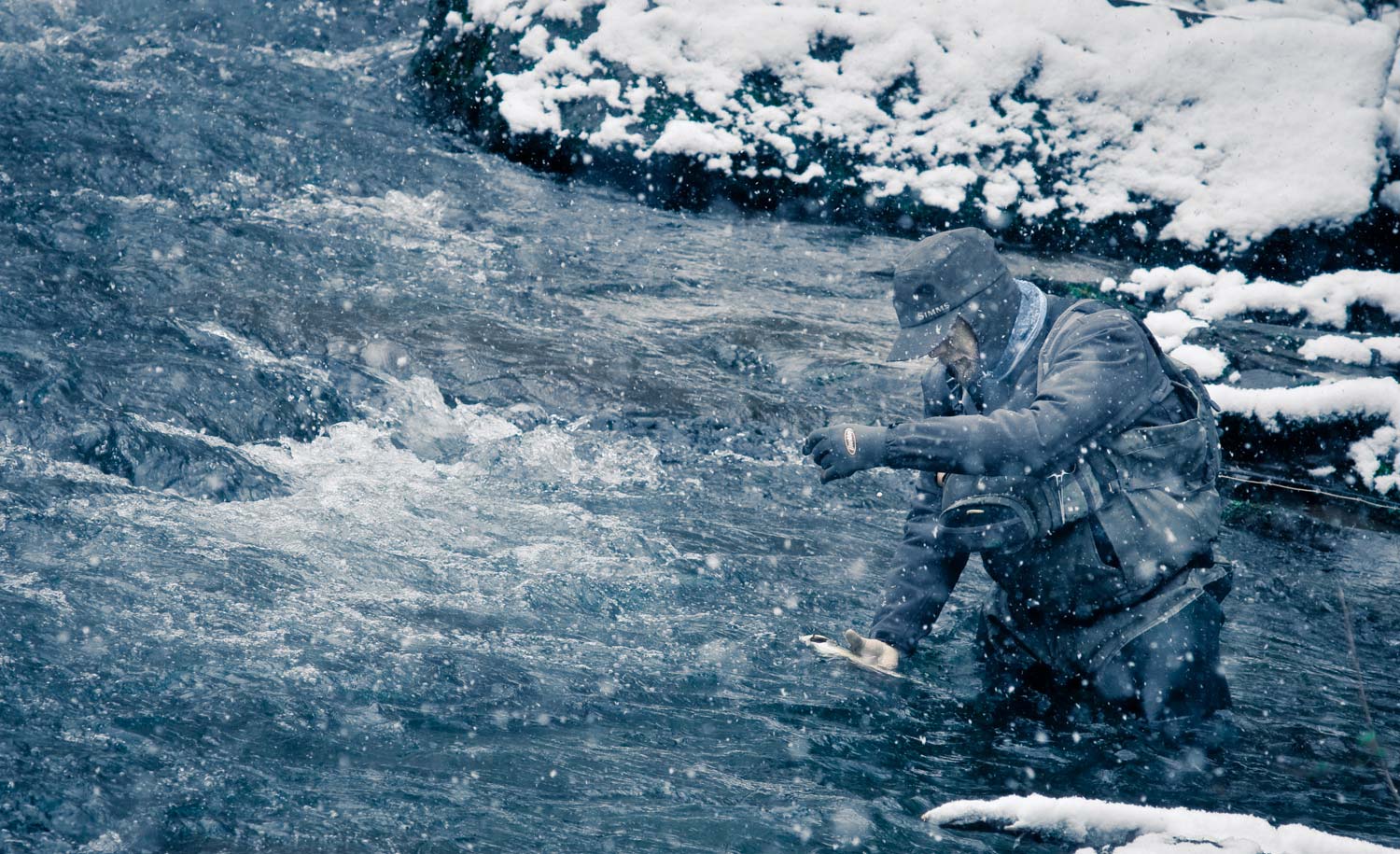
By: Alice Tesar
December, the mountain slopes are open to skiers and the rivers are practically void of anglers.
Not only is hitting the river an excuse to escape holiday guests but it can also be quite productive if you’re willing to endure the cold factor. If you know me, you know I’m a nymphing fool. Streamers and dries are exciting but mastering a nymph rig that catches trout with each presentation feels invincible. Most mountain town rivers are running low and uberclear right now. Furthermore, blue skies and snowy banks make your shadow and own presence on the water louder than ever. To avoid spooking more fish I recommend wearing muted colors and limiting your false casts, I even let my drifts go longer in an effort to slow down my above water activity.
Regardless of spooking easily, the trout is at its laziest in cold water. They are lethargic and prefer to place themselves where currents are easy, and the conveyor belt of tiny bites is steady. Midges are my constant this time of year- black beauties, mercury midges, and a biot midge if you find the trout feeding closer to the surface. Darker colors over bright and flashy. Pair the midge with a black or dark brown stonefly. A small stonefly, 16 or 14, seems to work better than something larger.
My final tip, that I repeat often is
Read More »Take The Right Fish
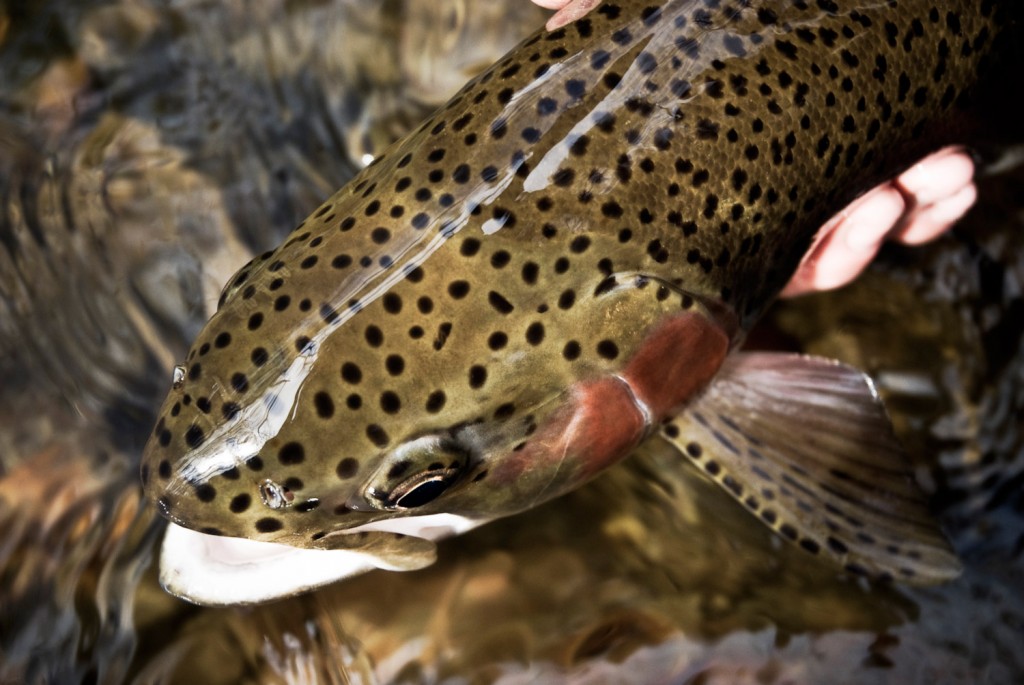
AS I’VE SAID PLENTY OF TIMES I’M A DEDICATED CATCH AND RELEASE ANGLER. THAT SAID, I RECOGNIZE THAT IT’S A PERSONAL CHOICE THAT I HAVE COME TO IN MY OWN TIME.
There are a lot of good ethical anglers out there who keep a fish once in a while and although it’s not for me, there isn’t necessarily anything wrong with it. The reason I say necessarily is this: fish are not all created equal and while killing a fish can be ok, killing the wrong fish is a tragedy.
Where trout are concerned, in most places a great many of the fish we catch are hatchery raised stockers. There are a couple of things about these fish that are worth mentioning. The breeding of fish for stocking is a pragmatic endeavor. It is done with a clear cut goal in mind. To raise fish in the fastest, cheapest, easiest way possible and get them in the river. There is very little, if any, thought given to the quality of these fish.
Well, what does that mean, quality? Several things. For one, the fish are raised on a diet of high protean fish food that promotes fast growth. This yields fish that have little of the natural color found in wild fish. There are other factors that contribute to this but food plays a role. It also yields fish with unnatural proportions. Small mouths and fins but big bellies. A trout that’s shaped like a football is a poor example of it’s kind.
Hatchery fish are generally raised in concrete runs. They rub against the rough concrete and wear down their fins to nubs. Not very attractive. The runs also contribute to the lack of color. Trout, like most fish, have natural camouflage. They take on the color of their surroundings. What color is concrete? Makes sense right?
Read More »Tear Up Your Fly Fishing Resume
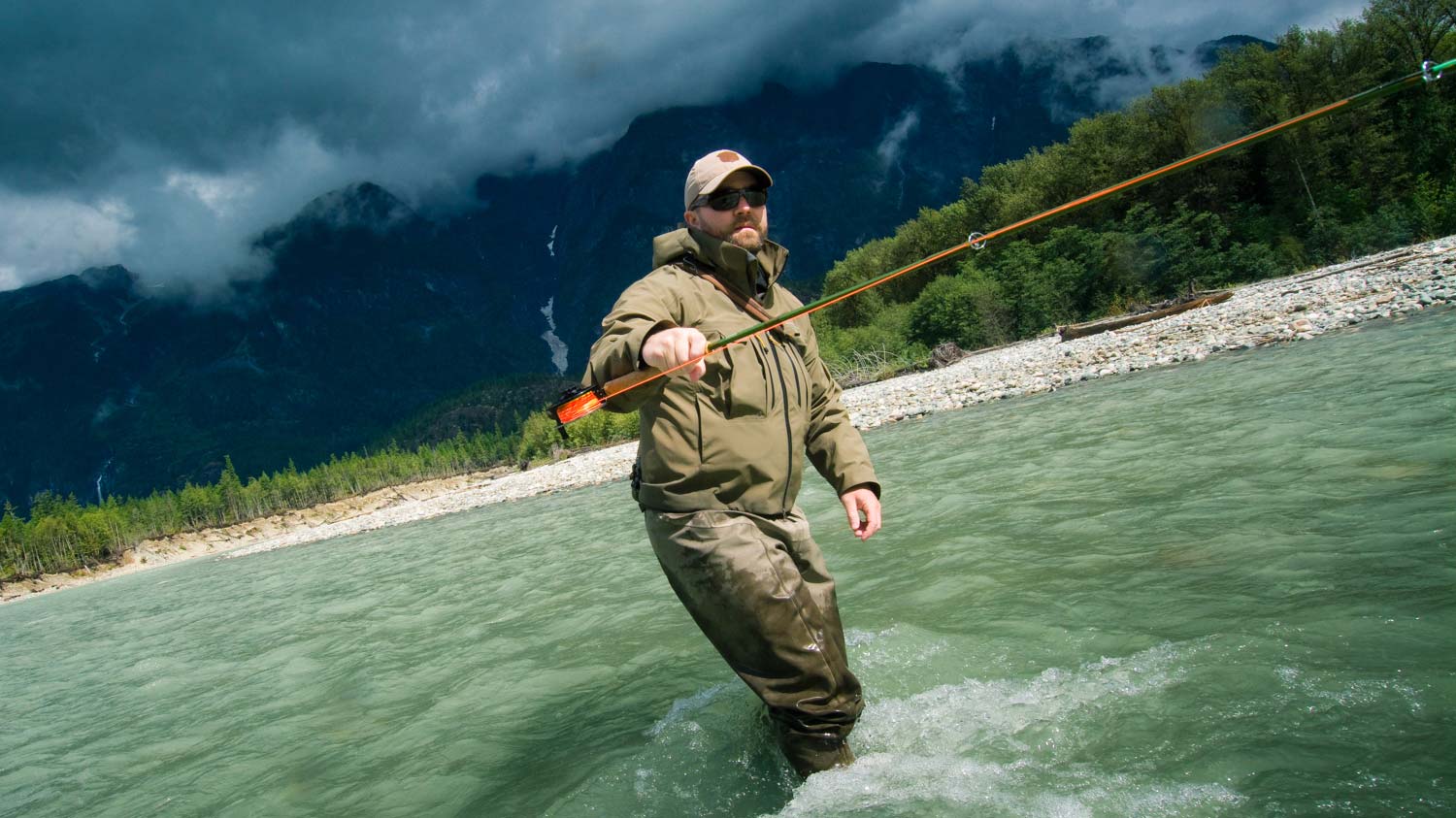
By Louis Cahill
Far too often it’s an angler’s self image that gets between them and the fish.
In a recent article, I wrote about how I believe that, as a group, the fly fishing community doesn’t always do a good job as ambassadors of the sport. In brief, I think we make new anglers self conscious and afraid to ask questions or seek advice. The other side of that dilemma is that way too many anglers let their pride get in the way of their progress. To often we take a defensive posture with other anglers, who could teach us something.
Nobody likes the expert. We’ve all spent time around the guy who wants to be the big shot and impress everyone with his fly fishing prowess, which is usually not impressive. I’m not defending that behavior. In fact, I find that the anglers who are the most skilled are also the most humble. I don’t think that is a coincidence. I think those anglers learned long ago that they could learn something from anyone, if they listened.
I was having a conversation about flats fishing with another angler who voiced some opinions I know to be pretty far off base. This was a conversation about fishing over a beer and since he brought it up, I felt invited to offer my opinion. I also knew for a fact that his assertion had a lot to do with his getting skunked that day, so I politely responded.
“I think these fish…” I was quickly met with, “I’ve fished down here for twenty years!”
I shut up and let him enjoy his ignorance. The fact is that he has fished three days a year for twenty years so I’ll concede that he has two months of experience. He knew nothing about me as an angler. Not how many days a year I fish, or for how many years, or even that I had a pretty great day while he was getting skunked.
I’ve heard that line a hundred times and I’ve never heard it from an angler who was
Read More »8 Common Fly Line Mending Mistakes
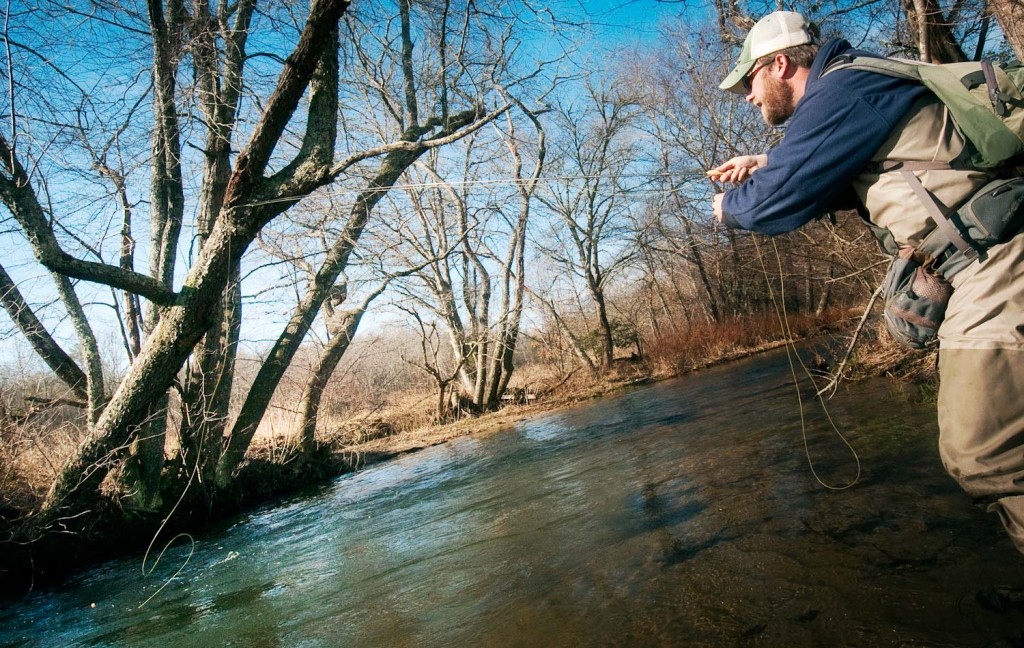
I spend the majority of my time teaching fly casting when guiding my clients, but the art of mending fly line is a close second.
A perfect cast can quickly become obsolete if you don’t understand the concept of mending fly line. When mending is timed correctly and executed properly it allows fly anglers to maintain a drag-free presentation, keep their fly in the target zone, and prolong the length of their drift. Developing good mending technique my friends, translates into more fish being hooked and landed. If you’re lucky enough to already have the basics of fly casting down, I highly encourage you to next focus your time on understanding and mastering the mechanics of mending fly line.
Throughout this post I’m going to try to touch base on the most popular mending mistakes I see on the river, but before I do so, here’s an intriguing question for everyone. Why is it, that fly anglers seem to always get their left and right mixed up when mending fly line? It happens to me guiding all the time. I’ll instruct my client to mend to the left and they’ll do the opposite, by mending to the right. One of the most common four word phrases out of my mouth is, “no, your other left”. This will probably hit home with more guides than anglers but I had to bring it up, since we all do it. I’ve tried using upstream and downstream for instructing mending direction, but that seems to be even more confusing. That being said, here are the most common mending mistakes I see on the river.
1. Anglers Wait Too Long to Mend
Everyone deserves props when a perfect cast is made, but don’t make the mistake of admiring it, and forget to follow it up with a good mend. Most often, but not always, a fly angler should make their first mend within a second or two of the fly landing on the water. Why you ask? Because it’s the most critical mend of your drift. It sets up your entire drift, and will eliminate the need for extra mending.
2. Anglers rod tip does not travel high enough in the air during the mend
The majority of the time when mending you’re trying to mend as much of your fly line and leader without moving your flies. The longer the cast or more fly line you have on the water, the higher you’ll need to move your rod tip in an oval shape path. “Give me a superman mend”, I say to my clients, when their mending a bunch of fly line. What I’m meaning by this is giving me the biggest mend you can.
3. Anglers mend their line by moving their fly rod in a sideways motion instead of upside down u-shape or n-shape
When your mending, your trying to pick up fly line and leader off the water and reposition it (placing it back down upstream or downstream of your fly). I see a lot of anglers moving their rod sideways in a straight line when mending. All this does is require you to mend again seconds later.
4. Some drifts require multiple mends
Even a perfect first mend isn’t always enough to get you through the entire drift drag-free. Sometimes fly anglers will
Information VS Knowledge
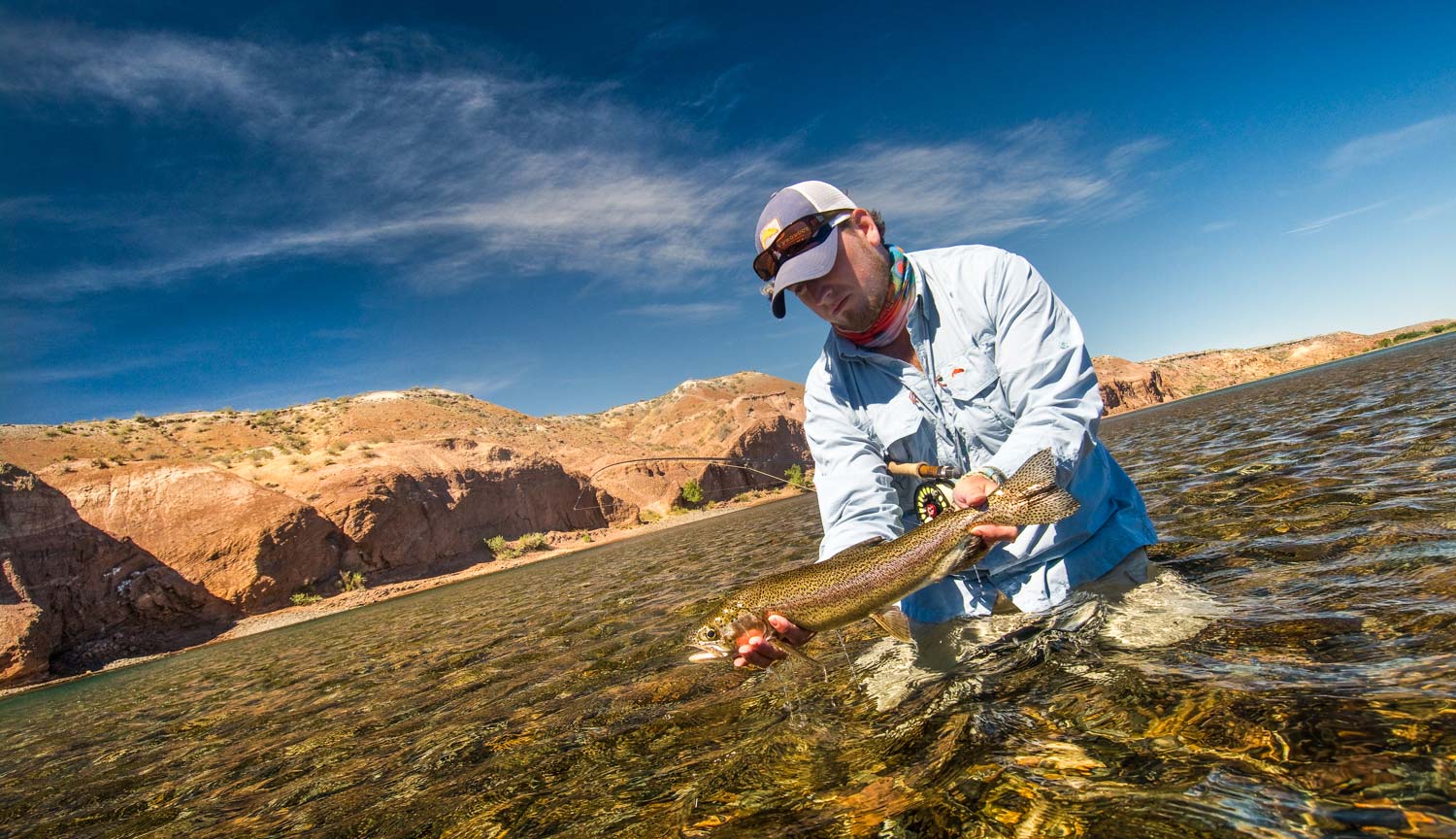
By Louis Cahill
A wise friend of mine always says, “Information plus experience, equals knowledge.”
It’s a concept as simple as it is brilliant. A teacher can give you information, but until you have the experience and the context to have real understanding, you don’t have the knowledge. True knowledge will always trump information. That’s just common sense.
I see a lot of anglers who get stalled in the gap between information and knowledge. Anglers who catch a lot of fish with the information they have but could catch a lot more if they really understood what they are doing. These folks are stuck at an intermediate level in the sport, and some spend their whole lives there. I’m going to give you some examples of specific ways this happens, but understand, it applies to every aspect of fly fishing…and everything else in life, truth be told. This is a little on the esoteric side for a fly fishing tip, I admit.
MY GOAL IS TO TRY AND HELP THOSE INTERMEDIATE ANGLERS LEARN A NEW WAY OF THINKING ABOUT FLY FISHING, WHICH WILL HELP THEM REACH THE NEXT LEVEL.
A classic example of this is the subject of leaders. I know lots of anglers who obsess about leader formulas. I think anyone who is advanced in the sport knows that the leader is incredibly important. Arguably the most important piece of tackle in the system. I’d personally rather fish the wrong fly on the right leader than the other way around. That said, I do not believe in leader formulas.
Sure, if you have a leader that works in a familiar fishing situation, you may never need to stray from that formula. As long as you always fish the same way, with the same type of flies, and the conditions never change, and the fish never get any smarter. If, however, you understand how a leader functions and how to
Read More »